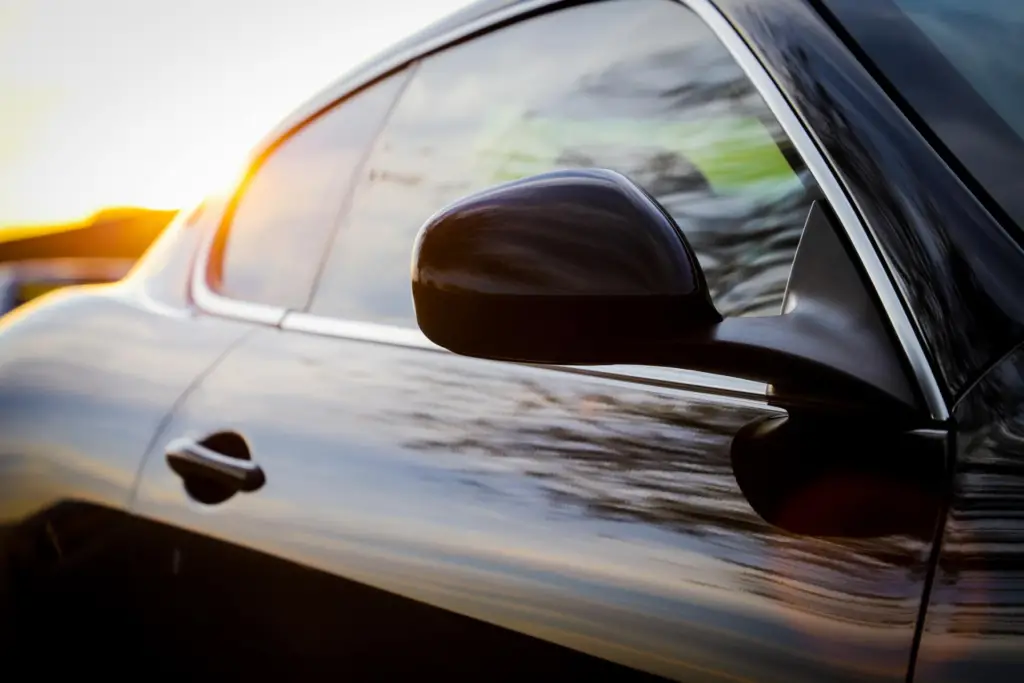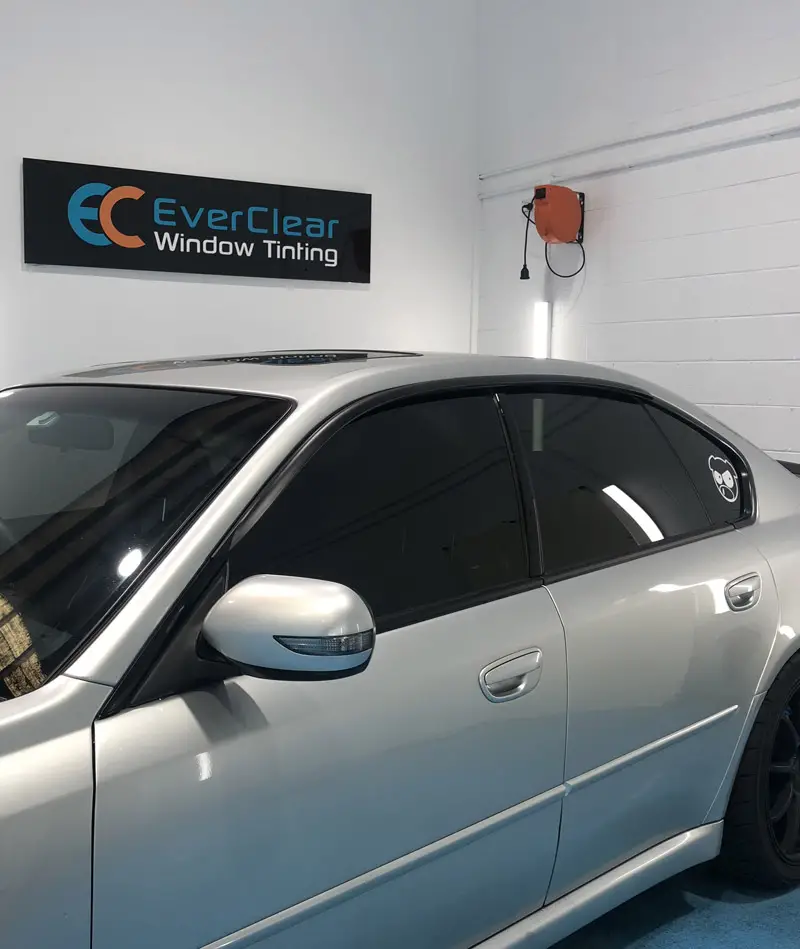Tinted windows have become increasingly popular among car owners due to their numerous benefits from harmful UV rays. Many vehicles come with factory-tinted windows, which provide a basic level of tint.
However, you may wonder what tint to put over factory tint.
To get the most benefit, put aftermarket window film over factory tint. Using aftermarket window film you can strengthen the tint’s overall performance. Some further advantages of using tint film include increased protection from the sun’s heat and harmful UV rays.
Keep on reading to find out more!
Enhancing Factory Tint: The Power of Aftermarket Window Films
Enhancing the factory tint on your car’s windows is best achieved by applying aftermarket window film. This additional layer offers numerous advantages, including improved heat and UV protection.
You may improve the effectiveness of your car’s tinted windows and give them a darker, more distinctive look by picking the correct aftermarket window film.
Just like how considering the right oven cleaners is important, so is selecting the perfect aftermarket window film.
Types of Tint to Put Over Factory Tint
There are different types of tint that can be applied over factory tint, including dyed, metallic, and ceramic tint. Here are the pros and cons of each type of tint:
Dyed Tint:
Dyed tint overlays are the most common and cost-effective option for adding an extra layer of tint to your factory-tinted windows. They consist of a layer of colored dye sandwiched between an adhesive layer and a protective top coat.

Dyed tint provides a darker appearance and offers moderate heat and glare reduction.
Metalized Tint:
Metalized tint overlays contain small metallic particles that reflect heat and UV rays away from the vehicle. They provide better heat rejection compared to dyed tints and can effectively reduce interior temperatures.

When installing metalized tint overlays, be cautious to avoid running over paint with your car to prevent potential damage.
Metalized tint also offers improved strength and durability, as the metal particles add an extra layer of protection to the windows.
Carbon Tint:
Carbon tint overlays are known for their high-quality appearance and superior performance. They consist of multiple layers of carbon film, which provide excellent heat rejection, UV protection, and reduced glare.

Carbon tint does not interfere with electronic signals. This makes it compatible with vehicles equipped with antennas and other electronic devices.
The compatibility makes carbon tint overlays an ideal choice for those who want both style and functionality. This means, there is no worry about interference with their vehicle’s electronic systems and signals.
Factors to Consider When Choosing Tint
Before getting into auto window tinting, it is essential to consider five factors to ensure you make the right choice.
Legal Considerations:
Before choosing a tint overlay, it is important to research and understand the local laws and regulations regarding window tinting. Different regions have specific limits on the darkness of tint allowed on vehicles, and exceeding these limits can result in fines or legal issues.
Desired Tint Level:
Consider the level of darkness you want to achieve with the overlay. If you prefer a subtle change or a lighter tint, a dyed tint overlay may be sufficient.
However, if you desire a significantly darker appearance or better heat rejection, metalized or carbon tint overlays would be more suitable.
Heat and Glare Reduction:
If heat reduction is a top priority, opt for a tint overlay with higher heat rejection properties. Metalized and carbon tint overlays typically offer better heat reduction compared to dyed tints.
Additionally, consider the level of glare reduction provided by the overlay, especially if you frequently drive in bright sunlight.
Aesthetic Appeal:
The choice of tint overlay can significantly impact the overall appearance of your vehicle. Consider the color and shade options available with each type of tint overlay and select the one that complements your vehicle’s style and your personal preferences.
Budget and Longevity:
Different types of tint overlays vary in cost and durability. Dyed tint overlays are generally more affordable but may not last as long as metalized or carbon tint. If longevity is important to you, investing in a higher-quality tint overlay might be a better option in the long run.
How to Apply Tint Over Factory Tint in 5 Steps
Enhancing the darkness and reaping additional benefits from your factory-tinted windows can be achieved by applying an overlay tint. However, it is important to note that washing the car in a driveway should be done with caution to prevent damage to the tint.
Here’s a simple guide to applying tint over factory tint.
Step 1: Clean the Windows
Before applying tint over factory tint, make sure to clean the windows thoroughly. Use a glass cleaner that is safe for tinted windows, such as an ammonia-free foaming glass cleaner or vinegar solution. Spray the cleaner onto the window and wipe it with a microfiber cloth or a squeegee.
Step 2: Cut the Tint Film
Measure the size of the window and cut the tint film accordingly. Leave a few extra inches on each side to ensure proper coverage.
Step 3: Apply the Tint Film
Peel off the protective layer of the tint film and spray the adhesive side with a soapy solution. Carefully place the film onto the window and adjust it to fit the shape of the window. Use a squeegee to remove any air bubbles and ensure proper alignment.
Step 4: Trim the Excess Film
Once the tint film is in place, use a sharp blade to trim the excess film along the edges of the window. Be careful not to scratch the window or the tint film
Step 5: Let It Dry
After applying the tint film, let it dry for at least 24-48 hours before rolling down the windows or cleaning it again. Avoid touching the tint film during this time to prevent any damage.
Tips and Tricks for Achieving a Professional-Looking Finish
Applying tint to your vehicle’s windows requires precision and attention to detail. Follow these tips and tricks to ensure a professional-looking finish and avoid common mistakes.
That will be all!
Frequently Asked Questions (FAQs):
Can I apply tint over factory tint myself or should I hire a professional?
It is possible to apply tint over factory tint yourself, but it requires precision and attention to detail. Hiring a professional can ensure a high-quality finish and minimize the risk of errors.
Will adding an overlay tint affect the warranty on my vehicle’s windows?
Adding an overlay tint may potentially void the warranty on your vehicle’s windows. It’s important to check the warranty terms and conditions or consult with the manufacturer or dealer to understand any potential impacts.
Can I remove the overlay tint if I change my mind or want to sell my car?
Yes, overlay tint can be removed if you change your mind or want to sell your car. It may require some effort and possibly professional assistance to ensure a clean removal without damaging the windows.
Endnote
Finding out what tint to put over factory tint can enhance the performance and aesthetics of your vehicle’s windows. Whether you opt for dyed, metalized, or carbon tint overlays, consider factors such as legal regulations, desired tint level, heat reduction, aesthetic appeal, and budget. This will solve the deal in no time.
Hopefully, we have served you well with the best insights, it’s time to go, bye for now!
As an Amazon Associate I earn from qualifying purchases.


